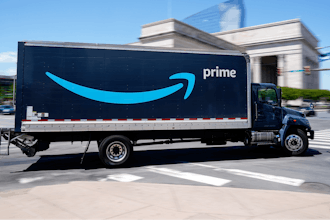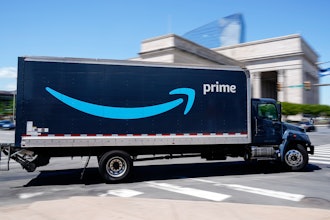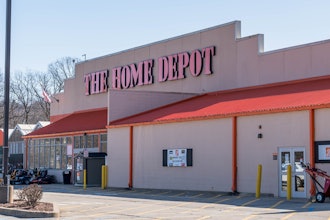Durable goods distributors have been substantially investing in online software for e-commerce with individual firms, co-operatives, and private groups spending six to seven figures (or more) annually on technology. At Benfield Consulting, our review of recent research, however, throws doubt on the ability of distributors to move sales online. This negates the return on the software investment and takes distributors out of the high growth online sector whose compounded annual growth is 7 percent per year and is roughly three times that of sales-assisted, full-service distribution. By 2025, one in four items sold will be transacted online in B2B markets and half of all items will be sold online soon after 2030. If distributors don't get online right, and soon, they will become known as a contracting channel; much like brick and mortar retail is seen today.
The research
The cited research includes two end buyer research projects and two distributor e-commerce research efforts, done in 2016/17 (see our new whitepaper here, and an executive summary here) that finds distributors are losing the online battle and often after substantial investment in software and people dedicated to online sales. Two end-user studies finds that distributor customers are increasingly buying direct from manufacturers and non-traditional suppliers. The distributor research studies find that once firms reach an average to above average sales online (between 10 percent to 15 percent of total volume) they, more often than not, begin to lose online sales. The research is done by respected firms who have, for many years, researched distribution, end user, and manufacturing parts of the B2B channel.
What's the problem?
Based on our field work, research, and seminars, the primary culprits are cost and culture of the existing full-service distribution firm. We define full-service as branch intensive companies and sales-assisted transactions within a consolidating industry where distributors cover multiple vertical markets with differing product and service needs. The cost issue is a function of:
- Excessive brick and mortar locations left over from a time when price and availability information was not real-time and often inaccurate
- Sales forces compensated on product sales where the customer prefers to self-serve (read commodities)
- Growing cost-to-serve that saps margin dollars due to expansion across multiple markets and a rising cost of complexity plus profit goal incongruence as sellers are compensated on margin dollars but extend operating expenses in special services to drive sales
- Decreasing support by manufacturers in volume rebates and special pricing arrangements as they increasingly bypass distributors for more efficient and effective online channels including selling direct
Full-service distribution is a high-cost channel with growing inefficiencies due to structure, coverage of multiple markets, and decreasing financial support from channel partners. The research finds that end users purchase from manufacturers direct and non-wholesale entities for several reasons. The primary driver is a more competitive price followed by a better online experience. Our 2016 research found that some 70 percent+ of distributors did not have a suite of adequate software to offer a competitive buying experience. Quality content, ranked by 90 percent of end users as the most important online variable, is supported by a PIM and less than 20 percent of distributors had a product information management system as of 2016.
The cultural impediment to online progress is more difficult to define but is the primary cause of falling online performance in firms who, at one point, were above average in online sales. Observations of cultural conflict include:
- Sellers who are reticent to move accounts online for fear of losing their job
- Managers who don't adequately support online efforts with changes in processes and new KPIs
- Executives who fail to grasp that e-commerce is more than a means to launder a transaction and is a substantial change in the way business is done
- Adherence to a full-service sales effort and branch complement despite their growing redundancy
- Rationalization that outside the industry competitors are not taking share with a better price and better online buying experience
What's a Distributor to Do?
Our recommendations are that distributor executives carefully consider the research and act quickly. In today's white-hot economy, it is not always easy to validate a share loss in the sales numbers. We recommend conducting customer-based research on what they buy online, how much, and favorite online suppliers. In an e-commerce audit a few years ago, we were told by the distributor sales force that online was not a big factor in the buying decision and they were losing few sales to online competitors. The research, of 250 end customers, found that 22 percent of the demand was online (versus less than 2 percent for the client) and commodity sales had decreased over 25 percent in the prior three years. All of this was masked by an acquisition spree but it was plain to see the client was buying distributors to, eventually, lose sales because of a poorly funded e-commerce effort.
Distributors should carefully evaluate their online software bundle to see if it offers a competitive buying experience. We define a competitive bundle as off the shelf transaction software, PIM, punch-out suite, faceted search and online quotation. Distributors cannot afford, however, to wait for the perfect software solution. They should move ahead on many fronts in addition to technology and begin to migrate existing accounts online, rework the sales force for better efficiency and lower long-term costs, and restructure the logistics to get brick and mortar cost down.
The importance of cost, reducing redundancies, and new "cost-out" entities
Online success is not optional for wholesaler/distributors in the B2B sector. Again, 25 percent of sales in B2B markets will be online by 2025. The next 5 years are critical for distributors to catch up and become competitive. To date, their efforts have fallen behind. Distribution executives should come to terms that the old model of acquisition growth, over many vertical markets, and extending the service promise by salespeople is too costly and creates a highly imbalanced and vulnerable account portfolio. In Exhibit I, we find from activity costing that 59 percent (B&C) accounts either nominally contribute to operating profit or destroy operating profit. Hence, bottom line profits are left up to 41 percent of (A) accounts.
As sellers expand the service promise to differentiate their efforts, they drive up operating expenses and this decreases the number of A accounts the firm actually earns a profit from. Over time, the growing service promise becomes increasingly hard to maintain service quality for and we find overcapacity of 25 percent or more. Management of the bottom line becomes increasingly short-term and we use the metaphor of a "spinning top" to describe management's rising tactical efforts to keep profits growing as the rotations decrease.
Low-cost online competitors can, and often do, target the commodity portion of A accounts and the resulting impact on the full-service distributor is not pleasant. Since 2002, we've published articles and research on a class of distributors called Transactional. These firms, generally, target the commodity sales of an established product-market with a model that has very good e-commerce software, few branches, few sellers and a simple service promise. They undercut full-service distributor's prices by upwards of 10 percent and can put an equal amount as a percent of sales to the bottom line. How do they do this? In Exhibit II we view category cost advantages of a Transactional distributor including sales assistance at 6 to 8 percent cost of sales, branch locations at 2 to 4 percent of sales, and overcapacity at 8 to 10 percent of sales.
The result is that the Transactional firm can relatively easily use cost advantages to under-price the full-service competition and this is directly the result of e-commerce and its ability to allow competitors to slice apart the value chain with new and different models of commerce.
Distributors are often dismissive of new models of commerce; they are not always perceptible. However, our experience is that they target different slices of the value chain and take share in small increments across large market areas. Their competitive effect is akin to the frog in the slow to boil pot of water. Once the heat is felt, it's too late.
The Online Future
B2B online sales will continue to grow and at the expense of old-style brick and mortar firms with lots of sellers who cover broad product-markets. Today, the overall sales volume, online, in distribution channels is somewhere in the neighborhood of 15 percent of revenues. Wholesale distributors will need to carefully, but quickly decide if they want an online future. Customers are making the decision daily and most prefer to order as much as they can online; it is more convenient and generally costs less. The research points to distributors losing their online progress to factors of cost of the old business model, incongruity in compensation schemes, and a sales culture that stymies online growth. The plight of the brick and mortar distributor parallels that of full-service retailers who tried to establish online efforts but failed; notably and miserably as many have gone out of business. We don't expect full-service distributors to belly up in number as their retail counterparts, they offer a lot of service in the value chain, but we do believe they will lose significant sales to more nimble, less-costly competitors with good technology and a more simple, easier to manage, and attractive value proposition.
Scott Benfield is a consultant for B2B markets in the areas of digital strategy, digital marketing, and change management for digital channels. He is a member of Digital Channel Advisors, an association of business consultants who help manufacturers and distributors in mature businesses change to compete online. He can be reached at [email protected] or www.benfieldconsulting.com.























